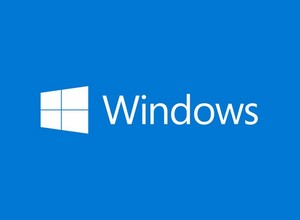 [German]There are indications that local user accounts in Windows 11 will no longer be able to be set up in the future, or only with considerable effort during setup. In the latest Insider Preview Build 26220.6772 (KB5065797) from October 6, 2025, Microsoft announced that the commands for setting up local user accounts during setup will be removed.
[German]There are indications that local user accounts in Windows 11 will no longer be able to be set up in the future, or only with considerable effort during setup. In the latest Insider Preview Build 26220.6772 (KB5065797) from October 6, 2025, Microsoft announced that the commands for setting up local user accounts during setup will be removed.
Several German blog readers brought this issue to my attention in the discussion forum (thank you for that). I will extract the relevant information here.
Bypassing online accounts during setup blocked
Microsoft wants to prevent users from bypassing the requirement to set up an online account when setting up a PC running Windows 11. Commands such as start ms-cxh:localonly, which could be entered during setup to force a local user account, will no longer work in the future. The announcement can be found in the blog post Announcing Windows 11 Insider Preview Build 26220.6772 (Dev Channel) dated October 6, 2025. It states:
Local-only commands removal: We are removing known mechanisms for creating a local account in the Windows Setup experience (OOBE). While these mechanisms were often used to bypass Microsoft account setup, they also inadvertently skip critical setup screens, potentially causing users to exit OOBE with a device that is not fully configured for use. Users will need to complete OOBE with internet and a Microsoft account, to ensure device is setup correctly.
The text states that in this Insider Preview, known mechanisms for creating a local account in the Windows setup experience (OOBE) will simply be removed. This will also apply to future Insider Previews and later to the final version of Windows 11.
Microsoft argues that these mechanisms have often been used to bypass the setup of a Microsoft account. However, this leads to users unintentionally skipping important setup screens during setup. This could result in users leaving the out-of-the-box experience (OOBE) setup orgy with a device that is not fully configured for use.
According to Microsoft, users must complete the OOBE setup steps with Internet access and a user-configured administrative Microsoft account to ensure that the device is set up correctly.
Restrictions for online operation
The above step suggests that Microsoft is forcing its Windows 11 users to operate online, where Redmond determines what is possible and what happens on the computer. Microsoft's CoPilot and cloud connectivity frenzy is casting its shadow. Bolko pointed out in a comment in the discussion area that:
- the bypassnro script (already deleted from Windows 11 in March 2025) will no longer work in the future (until now, the content of the deleted script continued to work).
- The command start ms-cxh:localonly, which could be entered in a command prompt during the OOBE phase to force a local account, will no longer work in the future.
Bolko wrote in a comment: "If synchronization is enabled, Microsoft will also steal the Wi-Fi password along with the location, and then worldwide." This gives Microsoft virtually global access to what were formerly "private" Wi-Fi access points. If this information is disclosed by Microsoft to anyone, third parties could log into the Wi-Fi network anonymously anywhere, provided that the routers do not have MAC filtering enabled. This would essentially open Pandora's box, and in Germany, "interference liability" would apply if third parties carried out illegal activities via someone else's Wi-Fi access.
Possible workarounds
In another comment, Bolko points out how Microsoft's entire plan could potentially be circumvented. From today's perspective, there are various workarounds.
Workaround 1
When prompted to create a Microsoft account, enter the current date as your date of birth. This will cause the creation of a Microsoft account to be rejected because the US COPPA (Children's Online Privacy Protection Act) prohibits children from creating accounts.
Microsoft is unlikely to be able to disable this workaround for legal reasons. Although an error message appears during setup, the option to create a local account is offered, writes Bolko.
Workaround 2 (for Windows 11 Home)
During the OOBE phase of setup, press the key combination Ctrl + Shift + F3 during the account creation step to enter audit mode. Then type the following command into the command prompt:
slui.exe /upk changepk.exe /ProductKey
By switching from Home to Generic-Pro, there should now be a new option to join a domain, which allows you to create a local account. Later, after installing Windows 11, you can change the product key back to Home, but the local account will remain.
Workaround 3
An autounattend.xml response file is used to create a local account. I discussed such files in the article Windows 11 24H2: Security issue caused by unattend.xml.
Workaround 4
During the OOBE phase, when creating the user account, you can press the key combination Shift + F10 and enter the following command in the command prompt.
WinJS.Application.restart("ms-cxh://localonly")
Our colleagues at deskmodder.de have described this in their wikiSo you can see that Microsoft is simply trying to control users by denying them local user accounts during setup. Of course, Microsoft developers could design the OOBE phase so that users end up with a clean Windows 11 installation and a local user account. If the user later decides to create a new Microsoft account or upgrade a local user account to a Microsoft account, the missing information could be requested (is there a preliminary computer science course somewhere that covers the necessary knowledge?).
When I look at the workarounds above, workaround #5 immediately springs to mind, namely to forego Windows 11 and this micromanagement. Either stick with Windows 10 until 2029 or 2032, or do away with Microsoft altogether and switch to Linux or macOS.



